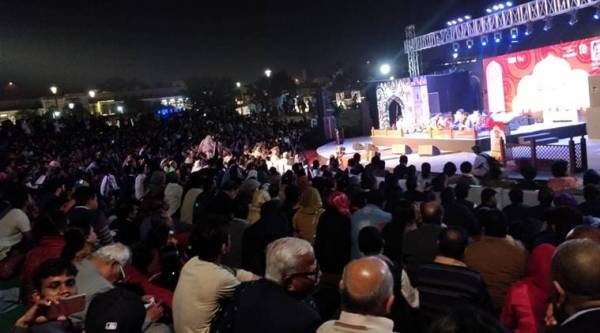 At an event organised by the ACL department. (Express Archive)
At an event organised by the ACL department. (Express Archive)
Changing the very definition of art to move it away from ‘classical’ art forms, the Delhi government’s fellowship programme will now include modern forms of artistic expression ranging from rap to mobile videography. The Sahitya Kala Parishad gives out scholarships every year. But in the upcoming year, apart from doubling the amount of money being offered to prospective candidates, the government has also included two new categories: research in art development and community art.
Community art, officials explained, is an artistic activity that is community-oriented with emphasis on the community itself. The new category for research in art development would focus on candidates aged between 18 and 60, who want to research different forms of artistic practices, said officials.
Apart from this, the government’s Arts, Culture and Languages (ACL) department has also changed the earlier category of ‘fine arts’ to ‘visual arts’. “This increases the ambit of what constitutes visual arts, breaks down the canon of fine arts as being restricted to classical forms like painting. Instead, this includes everything from graphic design to filmmaking,” said an ACL official.
Similarly, officials added, that the ambit of what constitutes art in the existing categories of dance, music and theatre had also been expanded. “What this means is that dance could mean hip-hop or Bollywood dance. Music isn’t just Hindustani classical music, but could include fusion or rap,” added the official.
Another key departure, officials said, from the previous years was the move away from the ‘guru-shishya’ system. “Earlier, applications required prospective candidates to also list down the name of their teacher, guru or where they received training from. But increasingly, artists are self taught and this will open up avenues for them to apply.”
Explaining the rationale behind the move, Deputy Chief Minister and ACL minister Manish Sisodia said, “Art is something that is about people and not just a matter of form. With time, forms of art and expression have changed and these fellowships need to be upgraded to mirror this. Art needs to be inclusive and socially relevant. Our government is committed to support and nurture artists to pursue their passion and contribute to society.”
While the scholarship amount for research in art development is Rs 12,000 per month in a year, that for community arts and visual arts is Rs 4,000 per month in a year — the scholarship for the other categories is Rs 4,000 per month for a period of two years.
“For the first time, applications will require candidates to also send a statement of purpose in either English or Hindi, where they explain how they will use the grant and how it will give back to society,” said the official.
Officials said there will be regular mentorship along with meet-ups and seminars to assess their growth culminating in annual festivals at the end of the year.